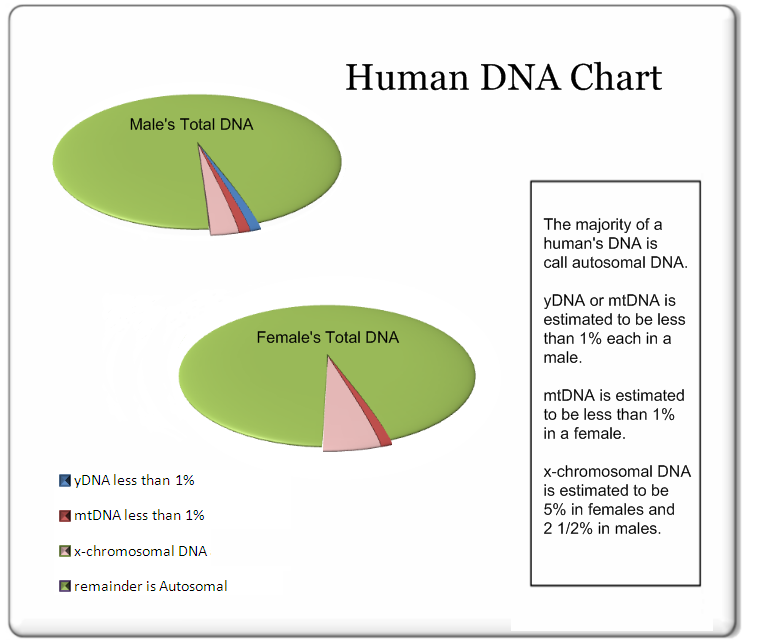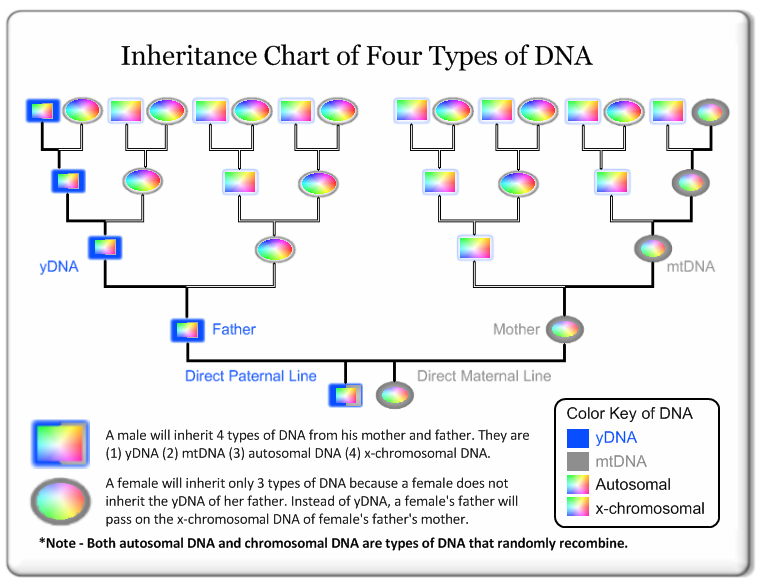What makes you who you are? There is no easy way to define this because the majority of any human's DNA is a random combination of his or her direct ancestors' DNA. The only two types of DNA that are completely definable and constant are yDNA and mtDNA, because they are non-recombining.
A man will inherit four types of DNA from his parents, those are: from his father (yDNA), from his mother (mtDNA and x-chromosomal DNA) and from both parents, their randomly combined atDNA known as autosomal DNA. A man's yDNA and mtDNA are only a very small fraction of his total DNA, less than 1% each. For x-chromosomal DNA, scientists estimate it is 2 1/2% of a man's total DNA.
For a woman she will only inherit three types of DNA from her parents; from her mother (mtDNA and x- chromosomal DNA), from her father (his mother' x chromosomal DNA) and from both parents, their randomly combined atDNA. In a woman while mtDNA percentages are the same as a man at less than 1%, her atDNA is lower percentage of her total DNA because a female carries two x-chromosomes and her x-chromosomal DNA is estimated at 5% of her total.
From the figures above and in the chart below, it is easy to see that the majority of DNA in a man or a woman is atDNA. Even though x-chromosomal DNA is randomly recombined like autosomal DNA, there is scientific evidence that it is not the same as autosomal DNA.
See the chart below to view a man's 4 types of DNA and a woman's 3 types of DNA.

So how is DNA passed down from a father and mother to their children and their children's children, and so on? The chart below shows the 4 lines of DNA, yDNA, mtDNA, x-chromosomal and autosomal DNA(atDNA). A multicolor graphic is used because the autosomal DNA from a mother and father and x-chromosomal DNA from a mother only is completely random and there is no exact way that this type of DNA combines to be passed from a mother and father to their children.

Now that you understand about the types of DNA you should know that x-chromosomal DNA for genealogy is completely new and still being researched. Most genealogists already know about yDNA and mtDNA testing. The other DNA left is autosomal DNA. Since scientists have been working on using autosomal DNA for genealogy the next question might be...